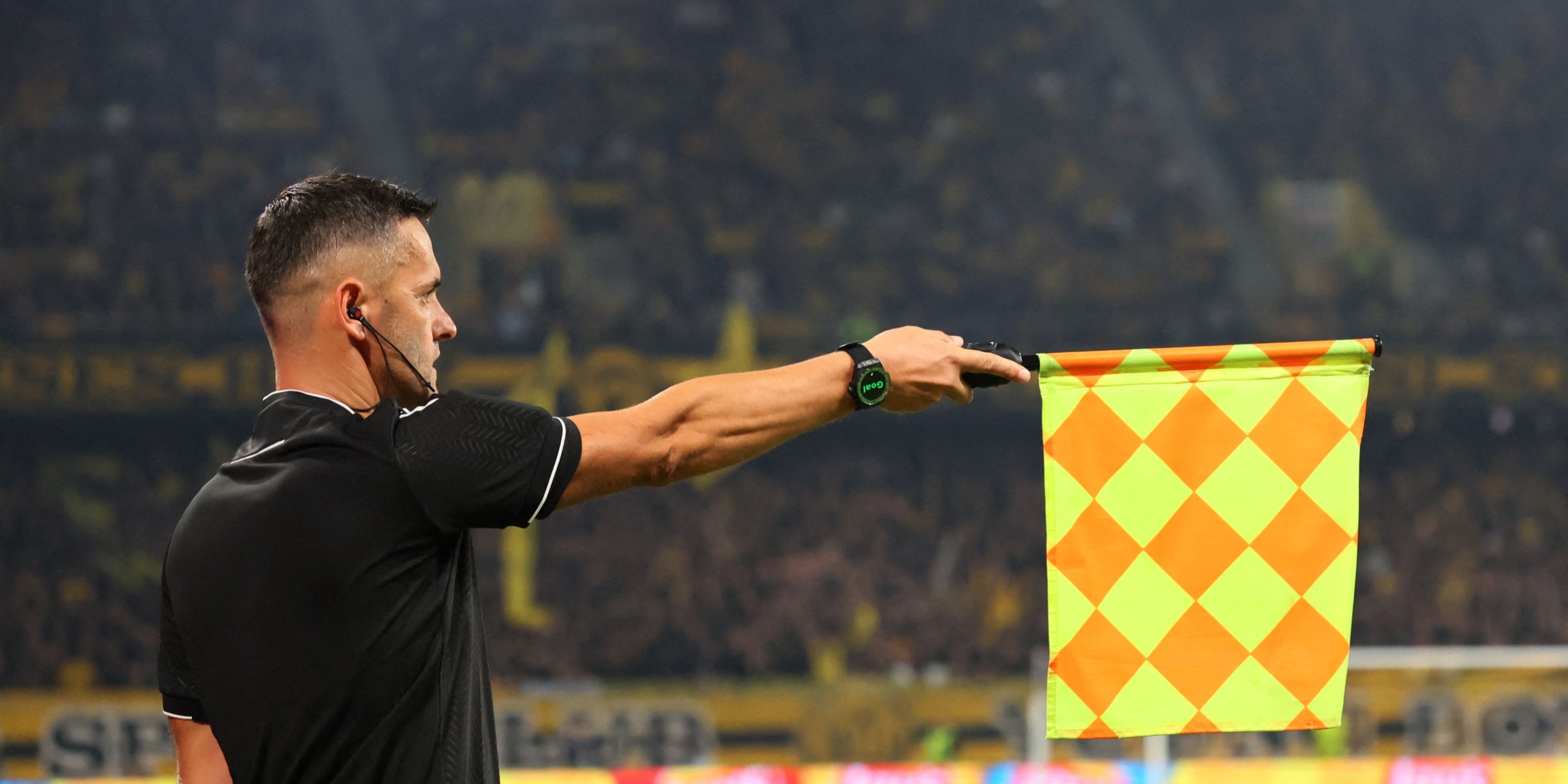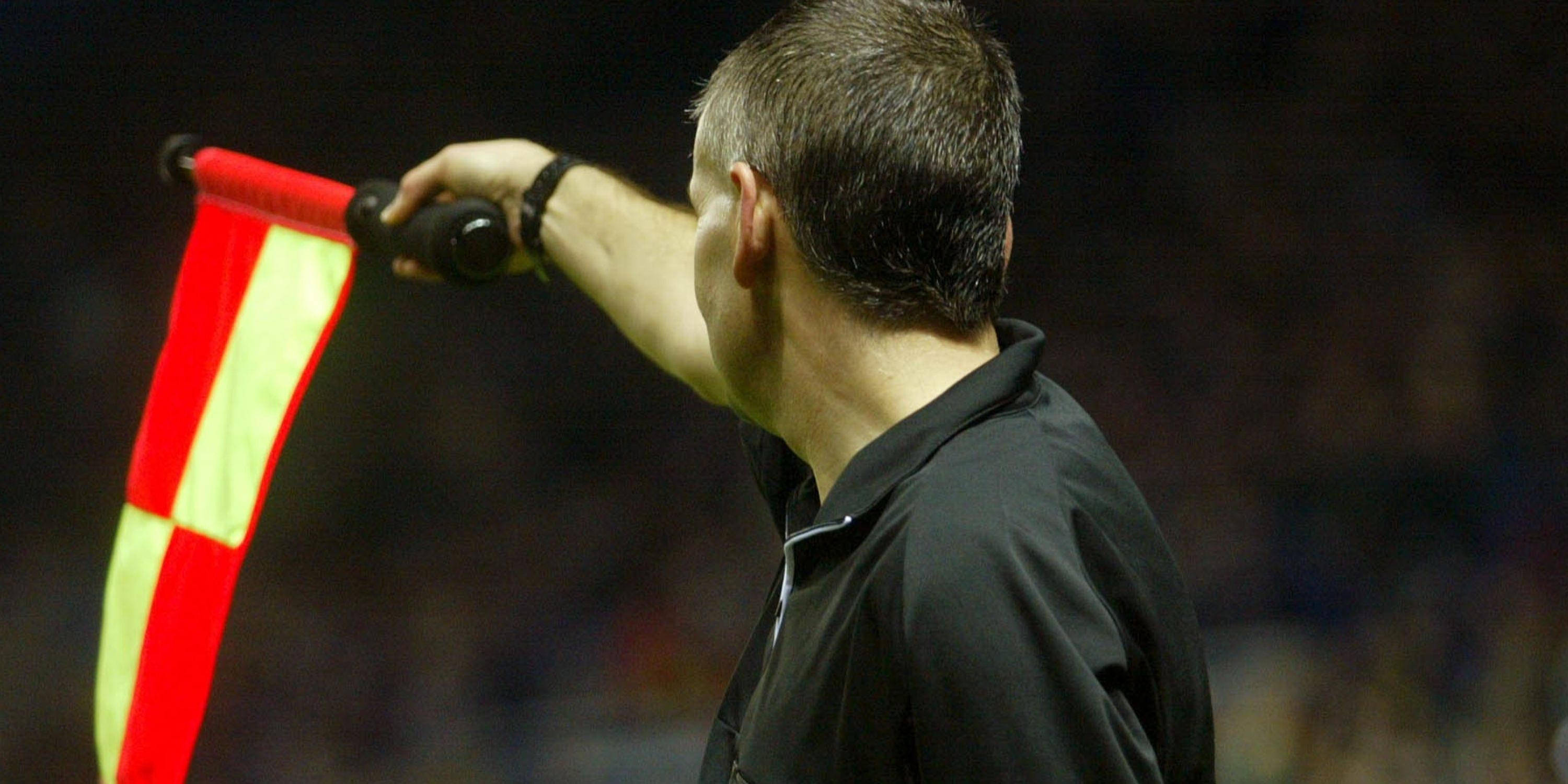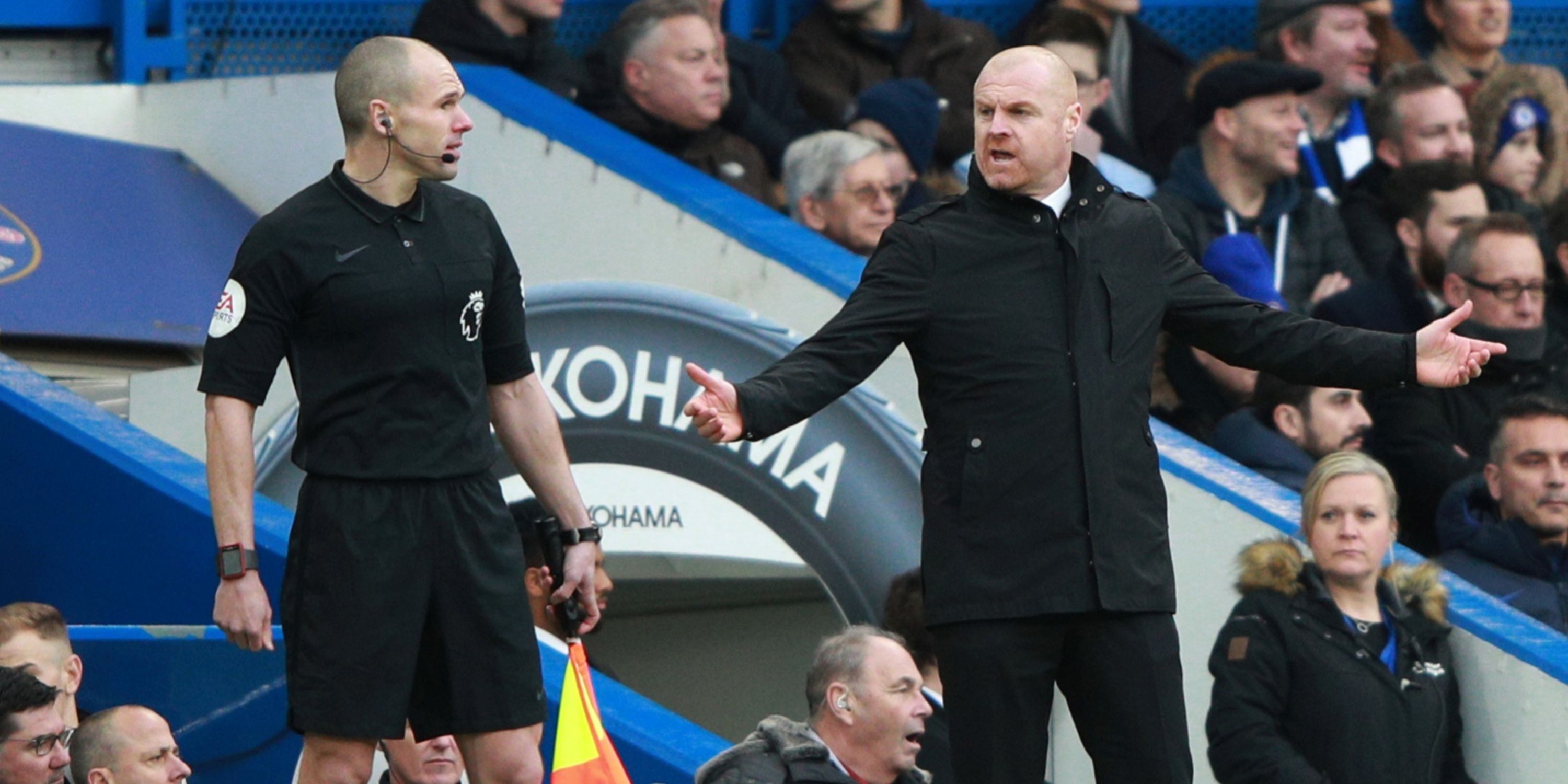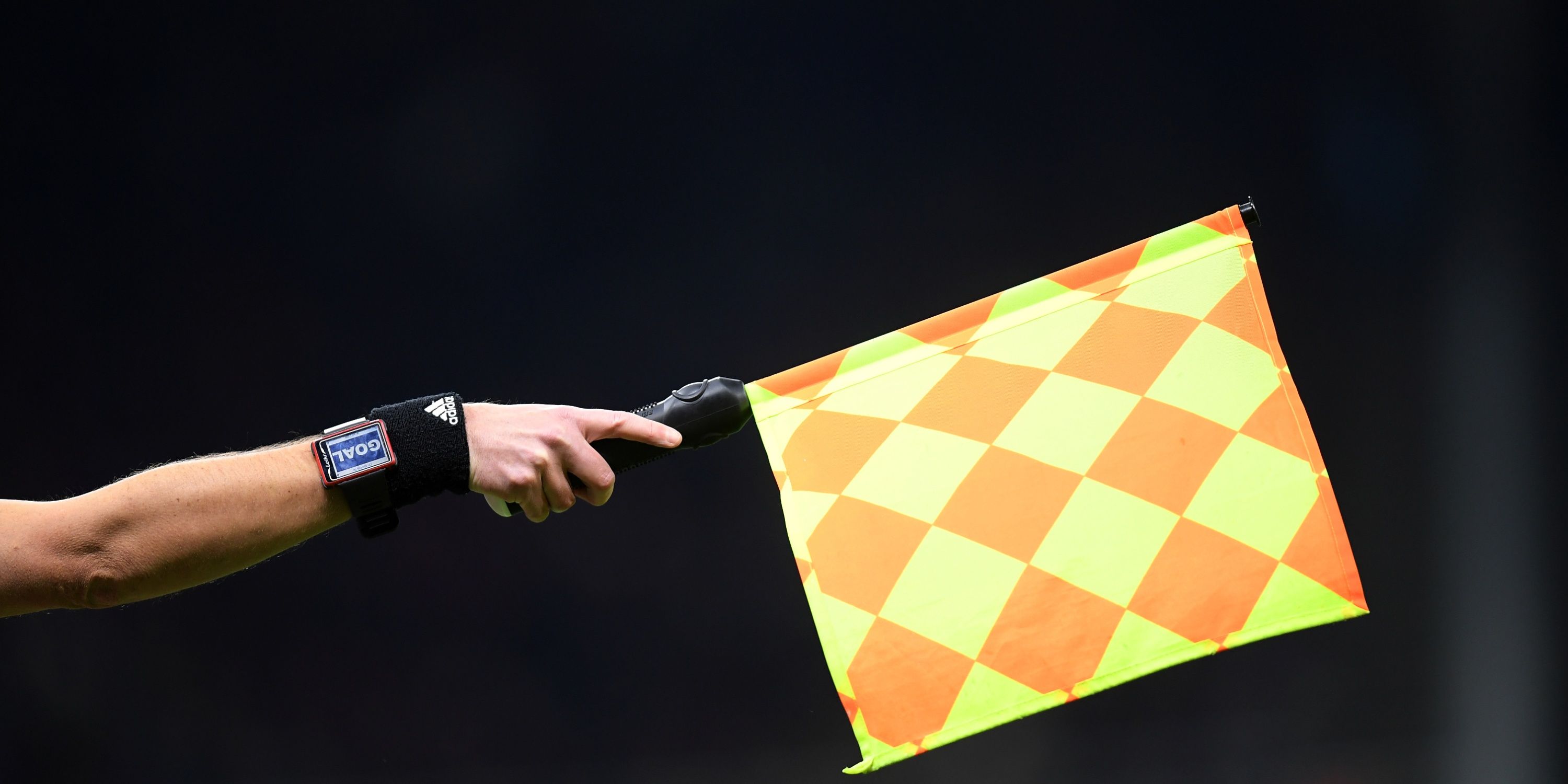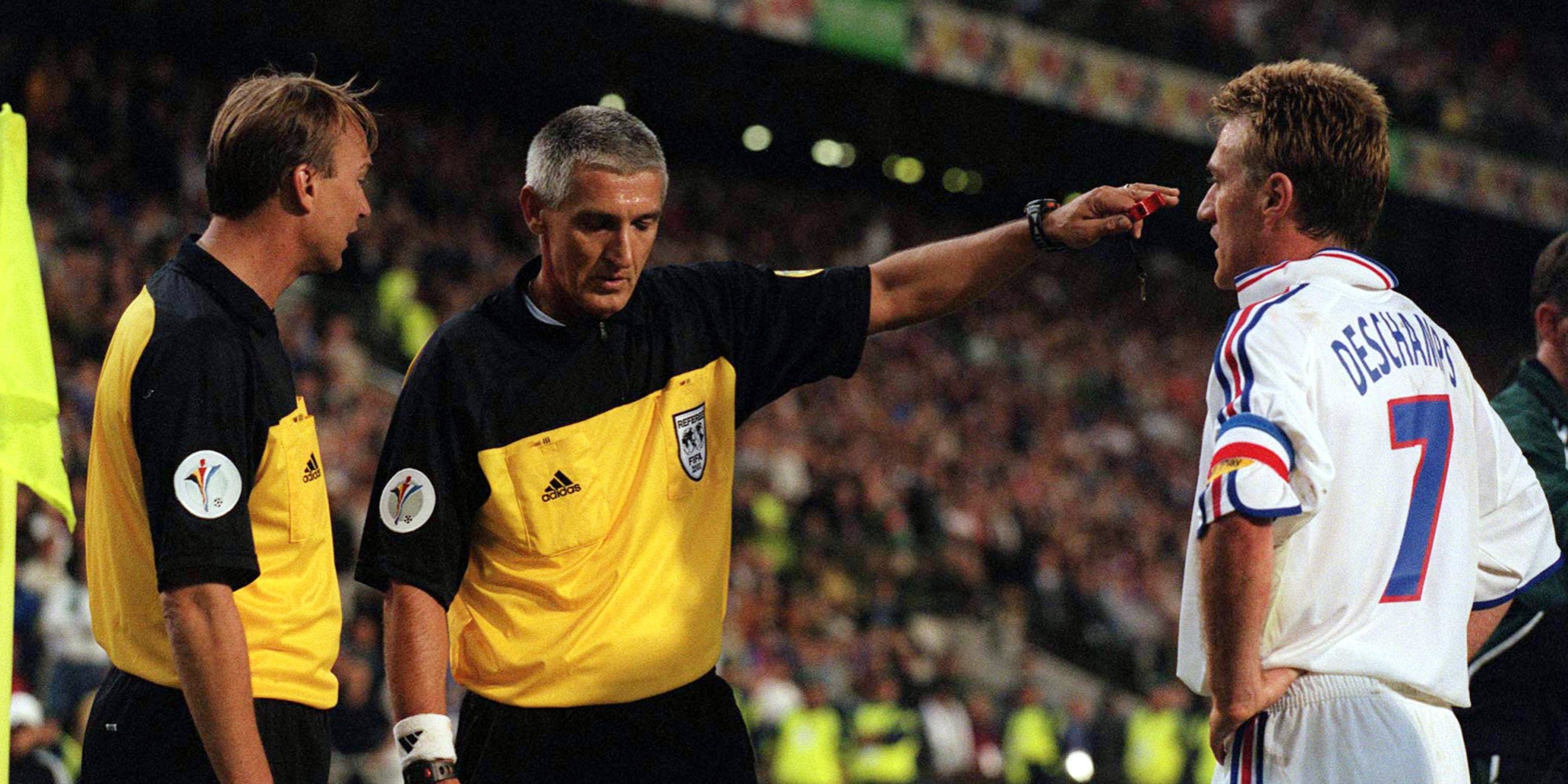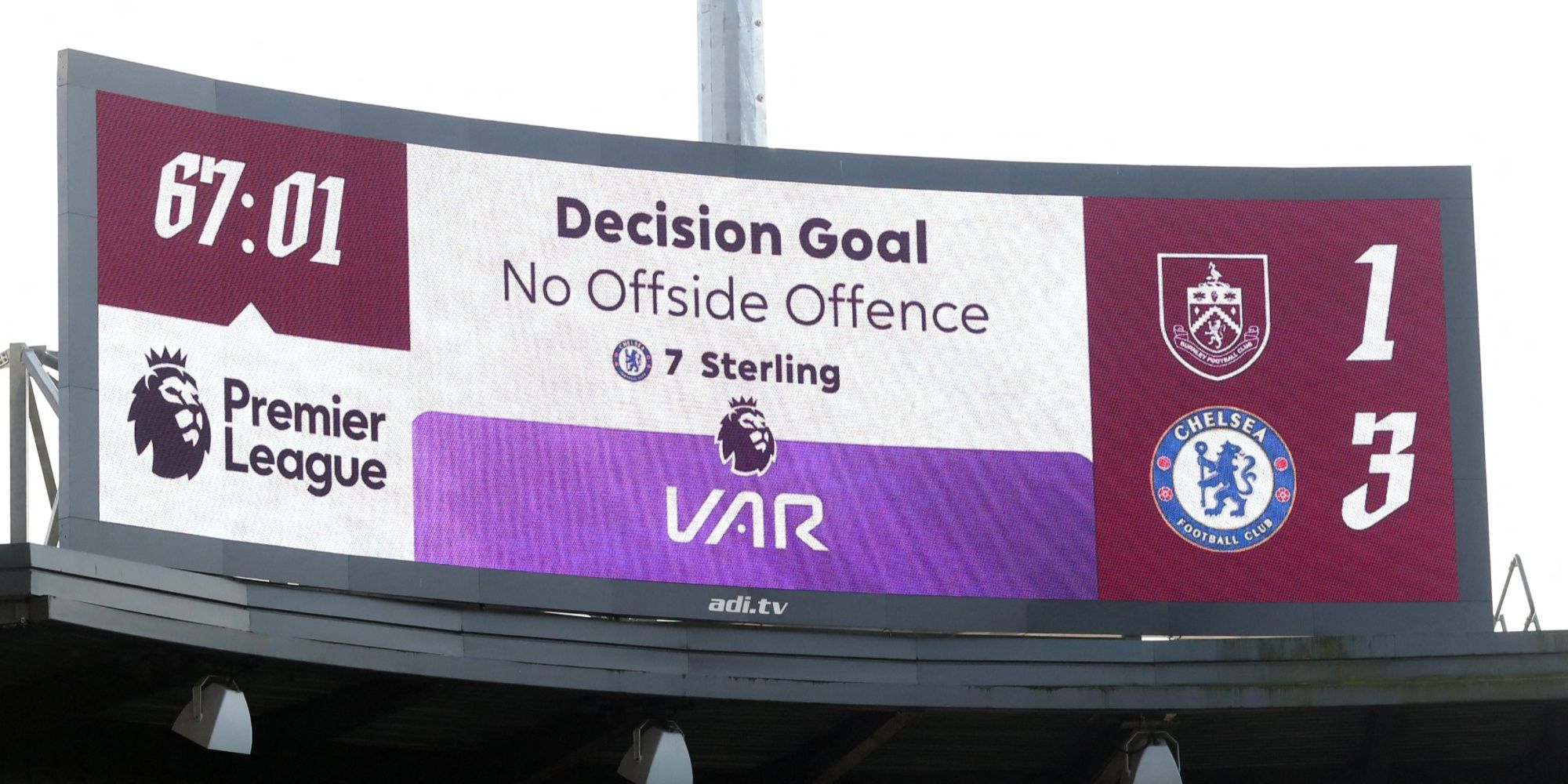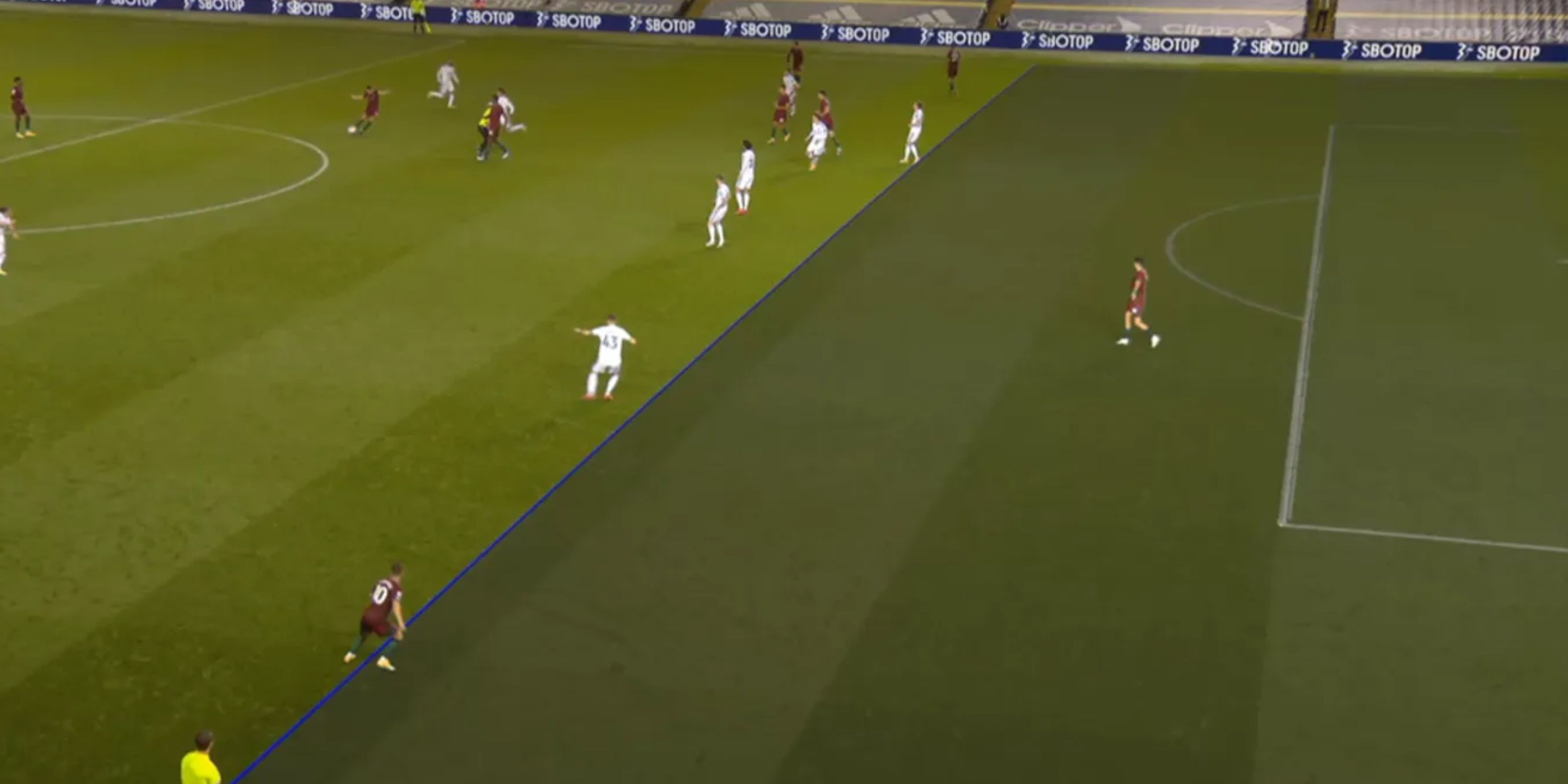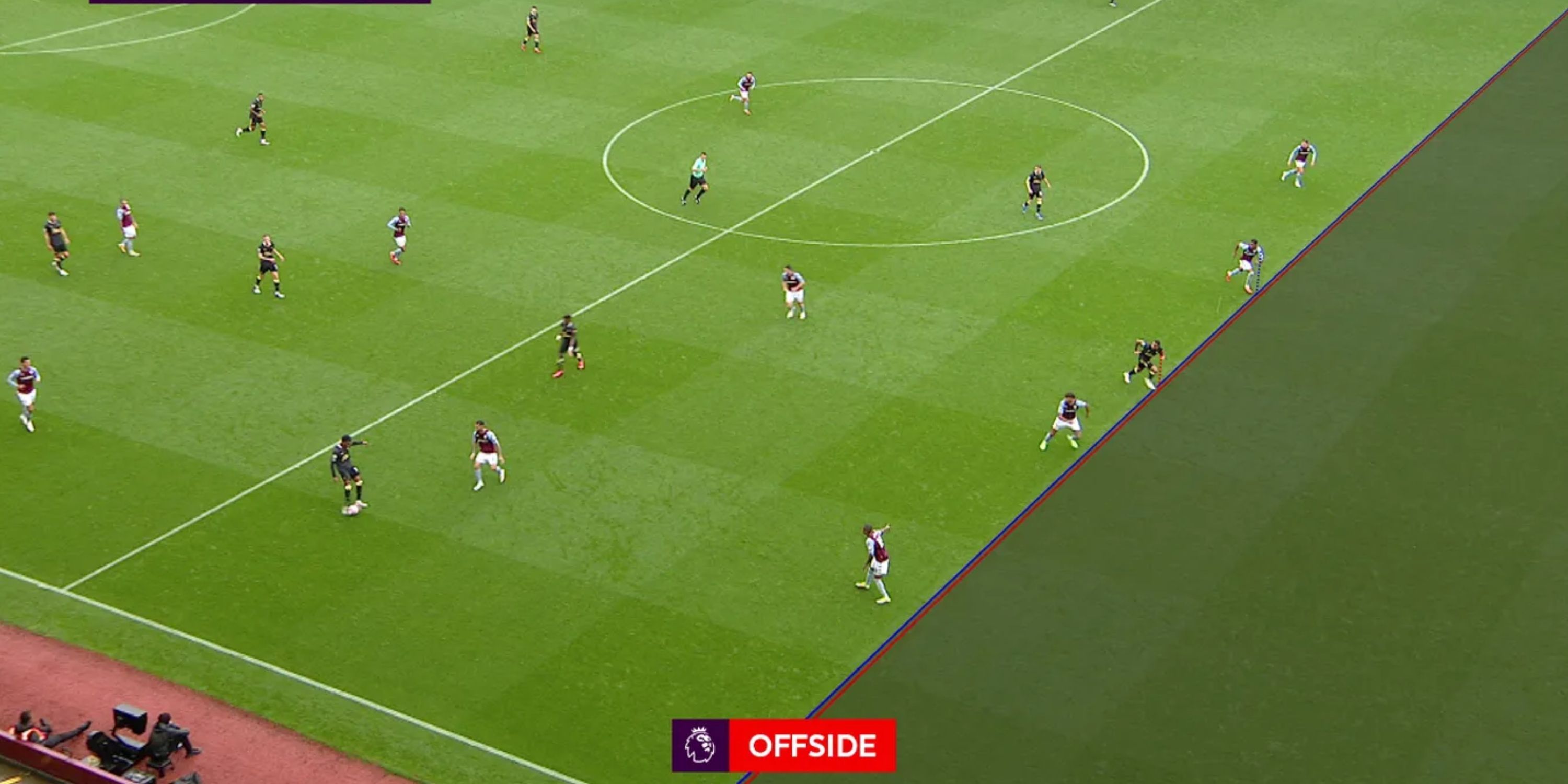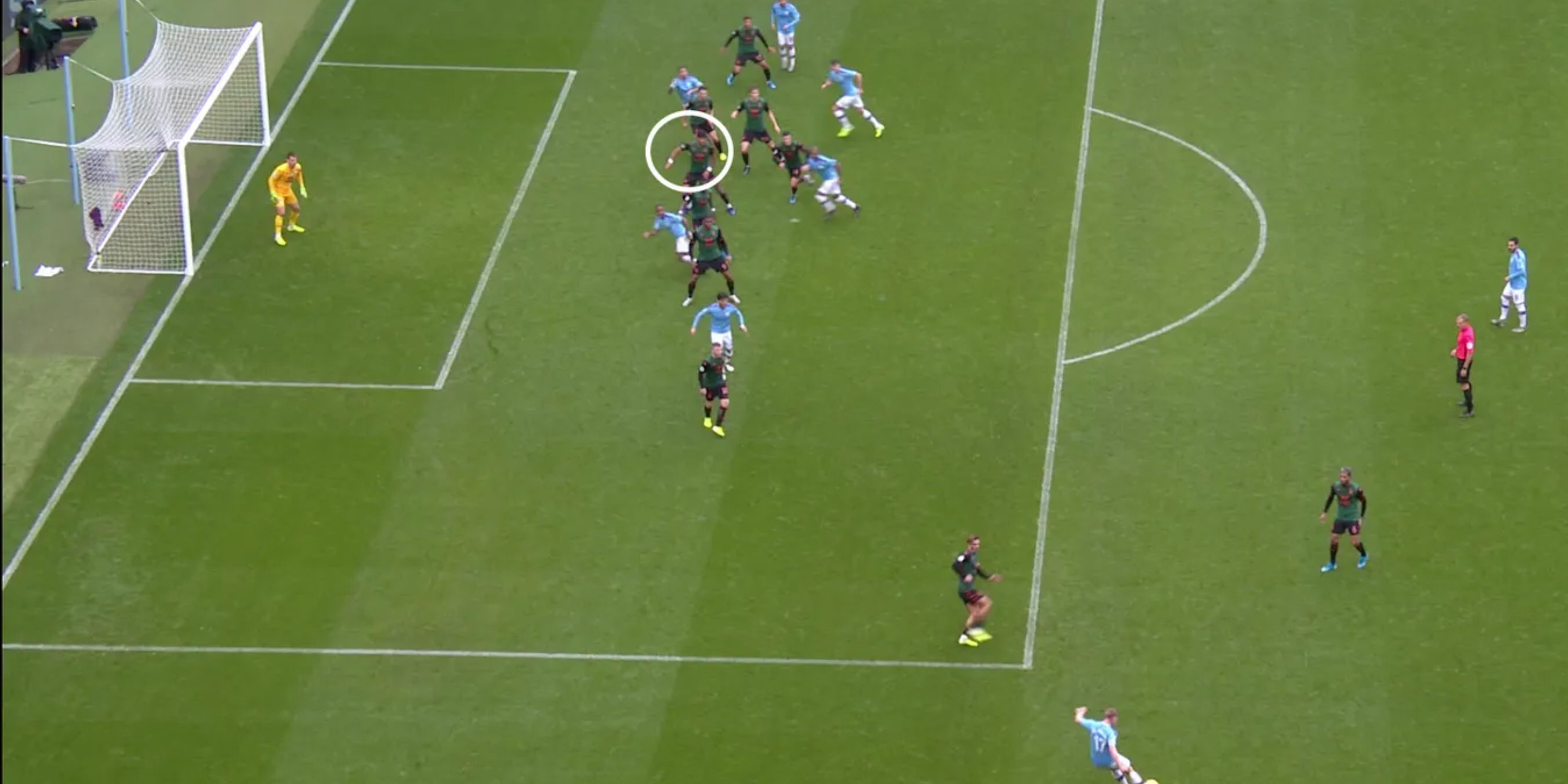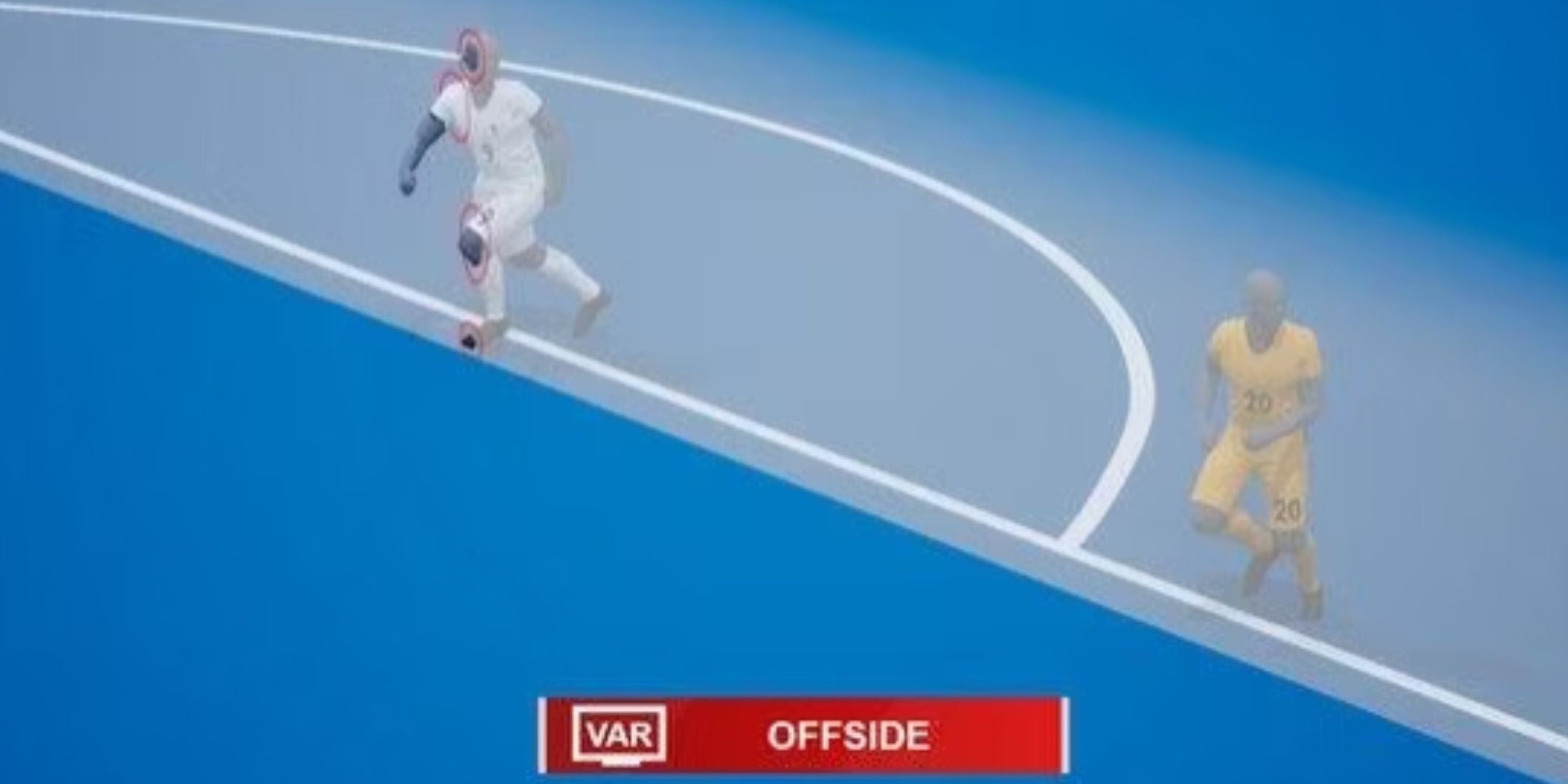Highlights
- The offside rule in soccer is constantly changing, making it difficult for fans to understand.
- Since introducing the video assistant referee (VAR), it has become more scrutinised and under pressure.
- But in this article, we outline how offside calls are made, the use of VAR in offside decisions, judgments within the game and how it has changed over the years.
The offside rule in soccer can be one of the most complicated aspects of the game to grasp, especially if you’ve only just started watching the sport. From tight angles, sudden changes of pace and subjective lines, it can be hard to work out what is offside and what isn’t.
It’s hard to watch a match without knowing the offside rule. Players are constantly trying to break behind the opposition’s defence, which is only possible if they know how to stay onside. It’s a similar story for defenders, who will often try to force attackers offside.
A player is offside if they are in the attacking half and closer to the opposing team’s goal line than both the ball and the second-to-last opponent. The rule has changed consistently over the years, making it harder to track what is the law and what isn’t. The rule has become more complicated since introducing the Video Assistant Referee (VAR). But with this article, you’ll be able to understand how the law works easily.
Being in an Offside Position
A player is offside if they are in the attacking half and closer to the opposing team’s goal line than both the ball and the second-to-last opponent. One of those two opponents is almost always the goalkeeper, so usually if either the ball or one outfield opponent is not between you and the goal line, you will be offside. You are not offside if you are level with the second-to-last opponent (or both opponents).
The opposing team will then receive an indirect free-kick should a player in an offside position come into contact with the ball or if they are deemed to become active in play while their team has the ball. A player’s head, body and feet can all be considered in an offside position, but the hands and arms of players, including goalkeepers, aren’t counted. The “upper boundary of the arm is in line with the bottom of the armpit”, according to the English Football Association (FA).
You are only classed as offside when:
- Any part of the head, body or feet is in the opponent’s half (excluding the halfway line).
- Any part of the head, body or feet is nearer to the opponent’s goal line than both the ball and the second-last opponent.
The law surrounding what part of the body is offside can be confusing, with former Arsenal manager Arsene Wenger only wanting a player to be deemed offside if their entire body overtakes the last defender. The Frenchman also wants clarification on that part of the law, so if a small part of the attacker’s body is now judged offside, they wouldn’t be under his latest ideas. FIFA and the IFAB support Wenger’s idea, which would provide a noticeable advantage to attackers, knowing it will be harder to be judged offside. The rule change will be first implemented in a trial period in the Netherlands, Sweden and Italy.

Related
FIFA to trial major change to the offside rule following Arsene Wenger suggestion
This could ultimately change the game as we know it…
Committing an Offside Offence
You are classed as offside for numerous reasons:
- When a player receives and plays the ball having been in an offside position when it is played to them. This is called interfering with play and is the easiest one to spot.
- They are also offside if they have been standing in an offside position when a team-mate plays the ball, which is saved or crashes off the woodwork, before rebounding to them. As it has not been played by an opposition player, they are still offside.
However, a player can still commit an offside offence without touching the ball. This is known as interfering with an opponent and can be done in four ways:
- By preventing an opponent from playing the ball by obstructing their line of vision – in an offside position.
- By challenging an opponent for the ball from an offside position.
- By clearly attempting to play the ball in an offside position – impacting an opponent.
- And, finally, by making an obvious action which impacts an opponent’s ability to play the ball.
Offside calls are made when the assistant referee believes one of these situations has occurred. If they think they are offside, they will raise their flag, allowing play to be stopped and an indirect free-kick to be awarded to the opposition team.
Sanctions and Punishments for Offsides
If an offside offence is spotted, the referee awards an indirect free kick where the infraction occurred, even if it is in the player’s own half of the field of play. To decide potential punishment for offside, a defending player who leaves the field of play without the referee’s permission is considered to be on the goal line or touchline until the next stoppage in play or until the defending team has played the ball towards the halfway line and it is outside its penalty area. If the player left the field of play deliberately, the player must be cautioned when the ball is next out of play.
Meanwhile, an attacking player may step or stay off the field of play not to be involved in active play. For offside, if the player re-enters from the goal line and becomes involved in play before the next stoppage in play – or the defending team has played the ball towards the halfway line, and it is outside its penalty area – the player is considered to be positioned on the goal line. Alongside this, a player who leaves the field of play on purpose, re-enters without permission from the referee and gains an advantage, must be cautioned by the referee.
Finally, if an attacking player remains stationary between the goalposts as the ball enters the goal, a goal must be awarded unless the player commits an offside offence (interfering with play) – where a free-kick would then be rewarded if so.
Exemptions from Offside
There are a few small exemptions for players standing behind the last defender. In soccer, there is no offside offence if a player receives the ball directly from a:
- goal kick
- throw-in
- corner kick
At the start of February 2024, Manchester City conceded a goal against Brentford after Neal Maupay, standing in an offside position from the goal kick, latched onto a long punt forward and found the back of the net. His goal was rightly allowed to stand. City’s players seemed perplexed, but Pep Guardiola has exploited the tactic himself. The Catalan coach flagged Ederson’s penetrative goal kicks as an extra weapon after signing the Brazilian goalkeeper and watched on admiringly as he teed up Sergio Aguero directly from the restart in August 2018.
How Offsides Are Signalled
An assistant referee is in charge of deciding whether an offside offence has been committed. There are two in each match – with one on each touchline. They signal by raising their flag to a vertical position and then, if the referee stops play, they partly lower their flag to an angle that signifies the location of the offence. They follow several rules to do it properly:
- Flag pointed at a 45-degree angle downwards: The offence occurred in the third of the pitch nearest to the assistant referee.
- Flag parallel to the ground: The offence occurred in the middle third of the pitch.
- Flag pointed at a 45-degree angle upwards: The offence occurred in the third of the pitch furthest from the assistant referee.
How the Offside Rule Has Changed
1863 origins
Originating in 1863, the law stated: “When a player has kicked the ball, any one of the same team who is nearer to the opponent’s goal line is out of play, and may not touch the ball himself, unless there are at least three opponents between him and their own goal; but no player is out of play when the ball is kicked from behind the goal line.”
Essentially, unless you had three opposition players in front of you – including the goalkeeper – you were judged to be offside. The rule progressed, with a slight change in 1907 suggesting you could not be offside in your own half. Proposed by Clyde FC, it was eventually confirmed by the Scottish and English FA.
A major change in 1925
In 1925, the FA switched to a ‘two-player rule’ system. Changing from a ‘three-player rule’ was in the works for decades, with the Scottish FA asking for it first in 1894. Usually stopped by the English FA – and World War I – it eventually changed after a trial match at Highbury, where they used the new system in the second half.
The rule change prompted a rapid spike in goals. A total of 4,700 goals were scored in 1,848 Football League games in 1924/25 before any amendments. This number shot up to 6,373 goals, from the same number of games, in 1925/26.
1990 changes
There weren’t any further changes after the seismic shift in 1925 for 65 years. IFAB declared that an attacker level with the second-last defender is onside in 1990, whereas previously they would be offside. It was a minor change, simply stating you could be level; before, the defender had to be ahead. The Scottish FA proposed this change in an attempt to encourage the attacking team to be more aggressive.
Changes since 2000
IFAB clarified the confusion over what part of the player is considered offside in 2005. They confirmed the player’s head, body or feet closest to the defending team’s goal line should be considered, while the hands and arms would not be. This is because they decided there ‘is no advantage to be gained if only the arms are ahead of the opponent’. This has been in use ever since, with the armpit used as the cut-off point in modern-day football.
Meanwhile, in another minor change, IFAB stated in 2009 that a defender who leaves the field of play without permission will be considered to be on the nearest boundary line, helping the assistant referee decide if attackers were still offside in the following minutes. Finally, in 2016, it was confirmed that a player on the halfway line can’t be in an offside position. For them to be offside, a part of the player’s head, body or feet must be within the opponent’s half of the field.
Introduction of VAR
Video Assistant Referee (VAR) was introduced to the Premier League in the 2019/20 season. It has been active in Major League Soccer (MLS) since August 2017. It is an external hub – in the Premier League’s case, at Stockley Park – where a team of three officials can watch replays to help the referee come to a decision. Since VAR’s arrival, there has been a change to the offside decision-making process.
Now the referee’s assistants must wait to raise their flag if the attacker has a clear sight of the goal. This allows for the full outcome to be processed without the risk of preventing a goal. Once the action is complete, they will either raise their flag or keep it down – if they think it is onside. This is then sent to VAR, where they begin processing the incident. Currently, VAR has two systems to work out if the player is offside or not – Gridline and Crosshair.
Gridline
A two-dimensional line, which can be quickly positioned in line with the final defender for clear offside decisions, as the Premier League suggest. This is used when it is clear to work out – and will be deployed in the background of all plays to ensure there are no notable offsides.
Crosshair
These are two lines that are positioned for the defender and attacker. The offside lines are drawn against the parts of the body of attacking and defending players that can be used to score goals; they will be drawn from their chest and legs, but not their arms. The lines can also take into account parts of the body off the ground, which is shown as a 3D vertical line. The positioning of the crosshair is manual, with a line one-pixel wide, so that the exact position of the offside line and the relevant body part can be accurately identified by the VAR.
The two lines, attacking and defending, are coloured yellow and black. In this state, the VAR can change the position of each line. These are then lined up with one another, allowing the VAR team to work out if the attacker is offside. The line-drawing process is no longer shown on TV, leaving only the final image to be broadcast.
Calibrated cameras
The systems of gridline and crosshair are created with calibrated cameras. Before each match, Hawk-Eye calibrates multiple cameras to give as many options as possible when showing an offside decision if a body part is covered in one angle. In the Premier League, five cameras are calibrated: the main wide camera, both 18-yard box cameras and both goal line cameras. Hawk-Eye can also use any broadcast camera to identify the point of contact with the ball by the attacker, and they synchronise all cameras for this purpose.
The broadcast cameras operate at 50 frames per second, so the point of contact with the ball is one of those frames inside 50 per second. This provides VAR with the best possible chance of finding the right outcome.
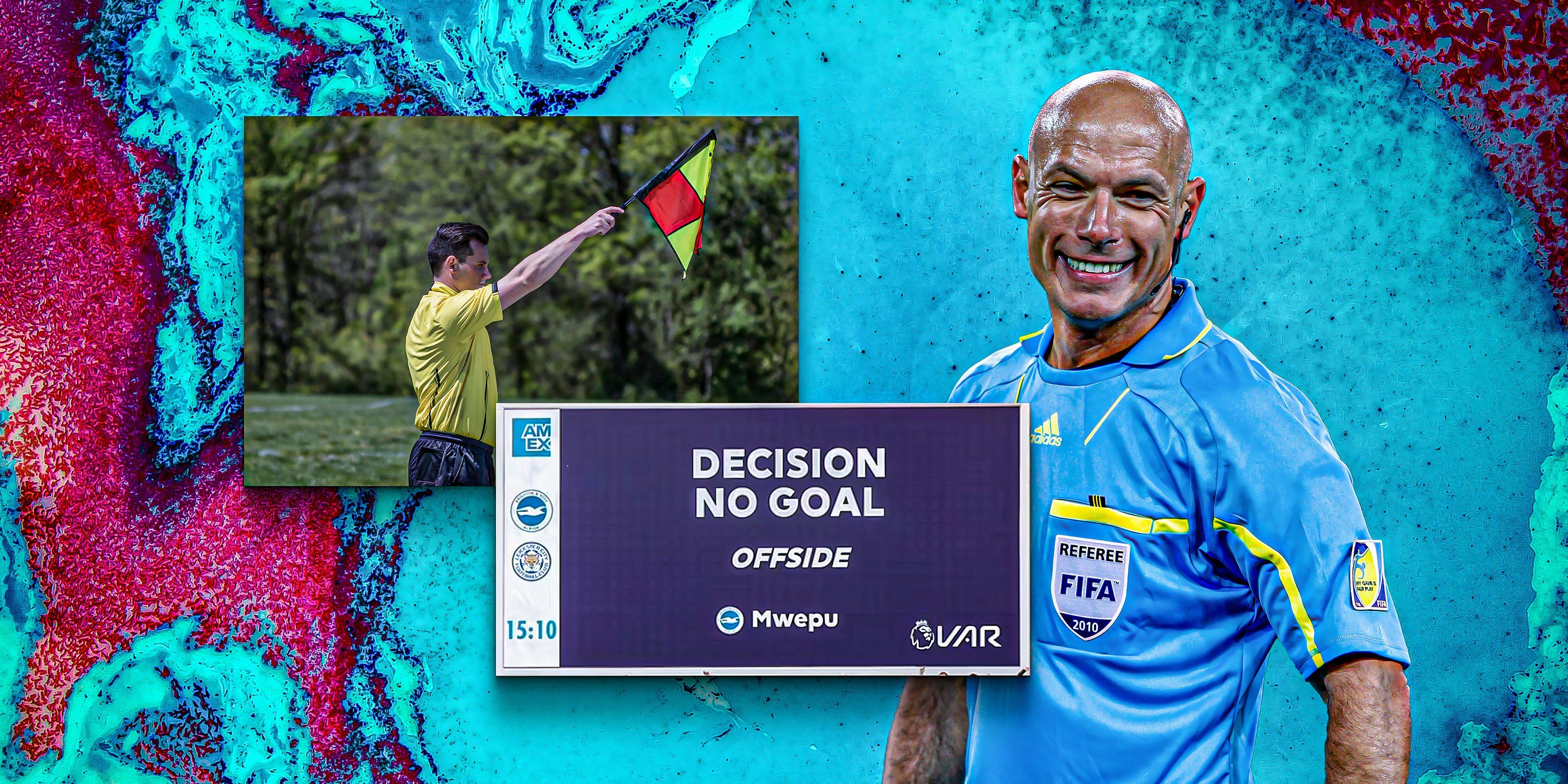
Related
How Semi-Automated Offsides Will Work During the 2024/25 Premier League Season
Semi-automated offsides will be introduced next season in the Premier League after it was voted through by the competing clubs.
Semi-Automated Offside
At the 2022 Qatar World Cup, FIFA introduced the idea of semi-automated offside technology to the biggest tournament in the world. It allows VAR and the referees to be provided with assistance when looking at tight offside calls.
The technology provides an automated offside alert to video match officials at the VAR hub whenever the ball is received by an attacker who was in an offside position, using 12 tracking cameras and up to 29 data points of each player. Officials then validate the offside decision – making sure it is correct – before informing the on-field referee. A 3D animation – showing the best possible perspective of the offside decision – can be shown on screens in stadiums and around the world on TV.
The system has also been adopted by the UEFA Champions League, but the Premier League initially rejected the idea of bringing it into the English top flight. The recommendation did not make it onto the agenda for the Premier League’s Annual General Meeting in June 2023 as chief executives across the 20 clubs reportedly stated the technology may date too quickly for it to prove a difference-maker.
However, the myriad of delays and VAR controversies throughout the 2023/24 campaign prompted England’s top flight to make sure that offsides will work differently going forward. All 20 Premier League clubs unanimously agreed to deploy semi-automated offside technology for the 2024/25 season in April 2024. The advanced system will supposedly reduce the decision-making process on offside calls by an average of 31 seconds, according to the BBC.
About Author
You may also like
-
Arsenal agree personal terms with Chelsea winger Noni Madueke
-
USMNT vs. Mexico Prediction, Betting Picks and Analysis for Gold Cup final
-
Chelsea announce the signing of Jamie Gittens from Borussia Dortmund
-
Arsenal given Rodrygo transfer boost as he wants Premier League
-
Man Utd Want to Sign ‘Insane’ Serie A Star, Could Push for Move After Fallout

